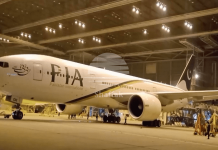BEIJING: Strong containment of the COVID-19 outbreak in China is also helping the country step up its recovery efforts, especially in the space of luxury goods.
The Chinese market makes up a large share of the global luxury goods market. According to McKinsey’s China Luxury Report 2019, Chinese consumers at home and abroad spent 770 billion yuan ($115 billion) on luxury items in 2018 – almost a third of the global spend.
One of the major reasons why Chinese choose to buy luxury goods abroad is that China’s import tax system and brand pricing strategy means luxury goods are priced higher domestically than abroad.
Currently, China taxes imported consumer goods such as garments and beauty products an average of 6.9 percent and high-end cosmetics by 15 percent. But tariffs for many luxury products such as perfumes and watches exceed 30 percent. However, at the Sunrise Duty Free’s online shopping mall, which was launched in February by the major airport duty-free shop operator in China, members can buy a tub of Estee Lauder eye cream, normally priced at 520 yuan in stores, for less than 300 yuan in its official Taobao shop. In addition, starting from July 1, the quota for individuals making duty-free purchases in Hainan was tripled to 100,000 yuan a year, with the duty-free product catalog increasing from 38 to 45 items and some electronic products and wines newly added to the duty-free list. Thus, duty-free shops in China, especially in the southern province of Hainan, which allows for Chinese travelers and not just international travelers, has seen a surge in sales. Duty-free shopping means inbound and outbound tourists can purchase duty-free goods at specific retailers in certain areas, without incurring the import value-added tax or the consumption tax. According to statistics from Haikou Customs, Hainan recorded 8.61 billion yuan of duty-free spending by visitors from July 1 to September 30, a surge of 227.5 percent year on year. During the period, cosmetics, watches and jewelry were the most popular items, accounting for 73.3 percent of the total sales revenue. China Tourism Group Duty Free Corp reported a total of 19.3 million yuan in first-half revenue, making China Duty Free Group (CDFG), the duty-free retailing giant in China who owns all four offshore duty-free shops in Hainan, the world’s largest duty free retailer for the first half of the year by turnover, according to The Moodie Davitt Report. –Agencies

海南島の免税店 内観20200908223040_Data-1068x601.jpg)



